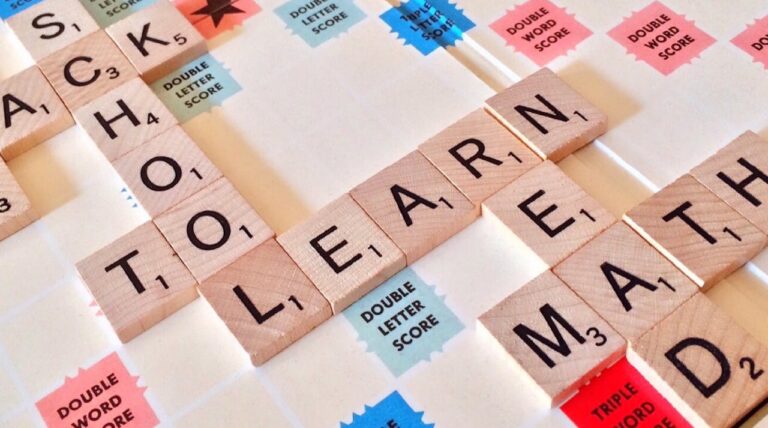WPPSI-IV Test

What is the WPPSI-IV test and how can it help identify gifted children?
The WPPSI-IV (Wechsler Preschool and Primary Scale of Intelligence – Fourth Edition) is a trusted cognitive test for young children ages 2.6 to 7.7 years old. It measures verbal, spatial, and reasoning skills to help determine developmental strengths, learning needs, and eligibility for gifted programs. Parents often seek WPPSI-IV testing to better understand their child’s abilities early on. On this page, you’ll learn how the test works, what skills it measures, how scoring is interpreted, and how to access free practice questions to help your child feel confident on test day.
WPPSI-IV Test: Wechsler Preschool and Primary Scale of Intelligence – Fourth Edition
The WPPSI-IV (Wechsler Preschool and Primary Scale of Intelligence – Fourth Edition) is a widely used intelligence test designed to assess the cognitive development of young children aged 2 years 6 months to 7 years 7 months. It is frequently used by psychologists and educators to identify giftedness, learning disabilities, and developmental delays in early childhood.
Who Takes the WPPSI-IV?
The WPPSI-IV is used for:
Preschool and early elementary-aged children
Gifted and talented program entry
Special education eligibility
Early intervention and diagnostic purposes
This test is especially valuable for identifying gifted children as early as preschool age, helping parents and educators support advanced learners with tailored academic opportunities.
WPPSI-IV Test Structure
The WPPSI-IV is divided into core and supplemental subtests depending on the child’s age group. Subtests measure different areas of intellectual ability:
| Age | Index Scores | Subtests |
|---|---|---|
| 2.6 – 3.11 | Verbal Comprehension, Visual Spatial, Working Memory | Receptive Vocabulary, Block Design, Object Assembly, Picture Naming |
| 4.0 – 7.7 | Full Scale IQ (FSIQ), plus five primary index scores: Verbal Comprehension, Visual Spatial, Fluid Reasoning, Working Memory, Processing Speed | Information, Similarities, Matrix Reasoning, Bug Search, Coding, Picture Memory, and more |
Each subtest is timed and administered one-on-one by a trained professional.
Free WPPSI-IV Practice on Our Website
Our platform provides free sample WPPSI-IV-style questions tailored to gifted testing. These practice materials help your child build confidence and familiarize themselves with common question formats used in verbal reasoning, spatial awareness, memory, and processing speed tasks.
Try Free WPPSI-IV Practice Questions Today!
WPPSI-IV Test Topics and Subtest Descriptions
The WPPSI-IV evaluates a wide range of cognitive abilities through various subtests. Each subtest is designed to measure a specific skill area that contributes to the child’s overall IQ score or index scores. Understanding these topics helps parents prepare children effectively for gifted testing or early learning assessments.
1. Verbal Comprehension
This area assesses a child’s ability to understand and use language.
Information: General knowledge questions about the world.
Similarities: Finding how two things are alike (e.g., “How are a bird and a butterfly alike?”).
Vocabulary: Naming objects or defining words.
Comprehension: Understanding everyday situations (why we do certain things).
Skills Measured: Language development, verbal reasoning, knowledge acquisition.
2. Visual Spatial
This index evaluates how well a child understands and manipulates visual information.
Block Design: Reproducing patterns using colored blocks.
Object Assembly: Putting puzzle pieces together to form a complete image (available for younger children).
Skills Measured: Visual perception, hand-eye coordination, spatial reasoning.
3. Fluid Reasoning
Measures the ability to detect patterns and solve novel problems without relying on prior knowledge.
Matrix Reasoning: Choosing the image that completes a visual pattern.
Picture Concepts: Identifying pictures that go together conceptually.
Skills Measured: Logical thinking, problem-solving, abstract reasoning.
4. Working Memory
Assesses the ability to retain and manipulate auditory or visual information over short periods.
Picture Memory: Recalling images after a brief presentation.
Zoo Locations: Remembering the location of animals on a grid.
Animal Coding (Younger Children): Matching animals with symbols or colors.
Skills Measured: Attention, concentration, short-term memory.
5. Processing Speed
This index measures how quickly and accurately a child can process simple visual information.
Bug Search: Matching a bug to the same type in a group.
Cancellation: Scanning and marking target items among distractors.
Skills Measured: Visual scanning, attention to detail, mental speed.
Optional/Supplemental Subtests
Receptive Vocabulary: Pointing to pictures when a word is said aloud.
Picture Naming: Naming familiar images.
Symbol Translation: Memory for symbols paired with images or numbers.
These are often used for diagnostic purposes or to gain more detailed insights into a child’s strengths and challenges.
Why These Topics Matter for Gifted Testing
Children who perform well across multiple WPPSI-IV subtest topics—especially in fluid reasoning, working memory, and verbal comprehension—may be identified as gifted. These core areas reflect the ability to learn quickly, think abstractly, and solve new problems—all key traits of advanced learners.
WPPSI-IV Scoring and Interpretation
The WPPSI-IV generates a Full Scale IQ (FSIQ) score, along with index scores for individual domains. The average IQ score is 100, with a standard deviation of 15. Scores typically fall into these categories:
130 and above – Very Superior (Gifted)
120–129 – Superior
110–119 – High Average
90–109 – Average
Below 89 – Low Average or Below Average
Gifted programs often use a 130+ FSIQ as a key eligibility criterion.
WPPSI-IV Online Sample Questions
1. Verbal Comprehension – Similarities
Q: How are a spoon and a fork alike?
A: They are both used to eat.
2. Verbal Comprehension – Vocabulary
Q: What is a “bridge”?
A: A bridge is something people or cars use to cross over water or roads.
3. Visual Spatial – Block Design
Q: (Image-based) Look at this pattern. Use red and white squares to copy it.
(You can display a simple red/white 2×2 pattern)
4. Fluid Reasoning – Matrix Reasoning
Q: Which picture completes the pattern?
[🟥⬜ | ⬜🟥 | ❓]
Choices:
A. 🟥⬜
B. ⬜🟥
C. ⬜⬜
Correct Answer: A. 🟥⬜
5. Fluid Reasoning – Picture Concepts
Q: Choose the pictures that go together:
Apple
Banana
Car
Train
Answer: Apple and Banana (they’re both fruits)
6. Working Memory – Picture Memory
Q: Look at these pictures for 5 seconds:
(Dog – House – Ball)
Now point to the picture of the ball.
Answer: Ball
7. Working Memory – Zoo Locations
Q: A lion is in the top left, a monkey is in the middle right. After 5 seconds, point to where the lion was.
Answer: Top left
8. Processing Speed – Bug Search
Q: Circle the bug that matches this one (show a red bug with 6 legs)
(Offer multiple bugs with variations in color and leg count)
Answer: The red bug with 6 legs
9. Receptive Vocabulary (for younger children)
Q: Point to the “hat”
(Show four pictures: dog, hat, banana, car)
Answer: Child points to hat
10. Comprehension
Q: Why do people wear sunscreen at the beach?
A: To protect their skin from the sun.
WPPSI-IV Test – Frequently Asked Questions
The WPPSI-IV (Wechsler Preschool and Primary Scale of Intelligence – Fourth Edition) is used to measure a young child’s intellectual abilities. It is often required for admission to gifted and talented programs, or to evaluate developmental delays, learning challenges, or cognitive strengths.
The test is designed for children aged 2 years 6 months to 7 years 7 months. It is divided into two age bands, with tailored subtests for younger (2:6–3:11) and older (4:0–7:7) children.
The test provides a Full Scale IQ (FSIQ) and multiple index scores (Verbal Comprehension, Visual Spatial, Fluid Reasoning, Working Memory, and Processing Speed). The average score is 100, with a standard deviation of 15.
Typically, a Full Scale IQ score of 130 or above is considered the benchmark for gifted program eligibility. However, some programs may accept children with strong index scores even if their FSIQ is slightly below 130.
Yes. While the test is designed to assess innate ability, familiarity with test formats can help reduce anxiety and improve confidence. Practice with similar verbal, spatial, and memory tasks can support your child’s performance.
Yes, most subtests are timed. The total test duration varies by age and the number of subtests administered but usually ranges from 30 to 60 minutes.
The WPPSI-IV must be administered one-on-one by a licensed psychologist or qualified professional trained in child testing and interpretation.






